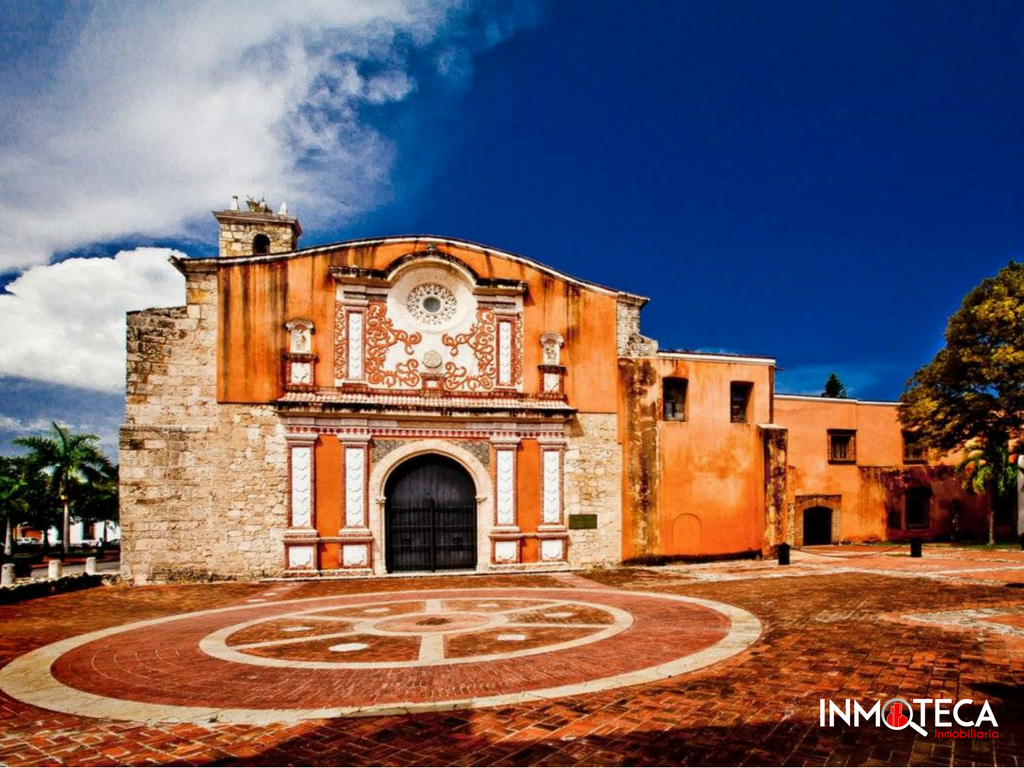
Brief history of its beginnings and its picturesque buildings.
Before Christopher Columbus arrived on the island, on October 12, 1492, it was populated by the Taínos who called it Quisqueya (mother of all lands) and Haiti (land of high mountains), which the navigator Genovés called Española , including the part that the Republic of Haiti now occupies.
At that time, the territory was divided into five cacicazgos: Marién, Maguá, Maguana, Jaragua and Higüey. These were governed by the caciques Guacanagarix, Guarionex, Caonabo, Bohechío and Cayacoa, respectively.
The first Spanish settlement dates back to 1493, although Santo Domingo was officially founded on August 4, 1496 by Cristóbal’s brother, Bartolomé Colón, with the name of Nueva Isabela, in honor of the Queen of Spain, Isabel I.
Later it was renamed “Santo Domingo”, in honor of the patron of Doménico Colombo, father of Cristóbal Colón. Since then the city of Santo Domingo became known as the “gateway to the new world, and / or primacy of America.”
For the time, it was limited to the North and the West by great defense walls and at its southern and eastern ends by the Caribbean Sea and the Ozama River.
In 1502, Santo Domingo was destroyed by a hurricane and the new governor, Nicolás de Ovando, rebuilt the city in a nearby location.
The original design of the city and a large part of its defensive walls, are still appreciated today in the City or Colonial Zone, declared in 1990 a World Heritage Site by the United Nations Educational, Scientific and Cultural Organization (UNESCO).
The Colonial Zone, bordered by the Ozama River, has an impressive collection of 16th century buildings, including palatial houses and churches that reflect the architectural style of medieval times.
The Ozama Fortress, one of the oldest historical buildings, dates from 1502.
The most important colonial buildings of the city include the Cathedral of Santa María la Menor, called Catedral Primada de América, which establishes its distinction, the Alcázar de Colón, the first castle of America and residence of the Viceroy of the Indies, Don Diego Colón, son. of Christopher Columbus; the Monastery of San Francisco, the ruins of the first monastery in America; the Museum of the Royal Houses, the old Palace of the Governor General, the Palace of the Royal Audience.
Other important constructions are: Parque Colón, a historic plaza, Fortaleza Ozama, the oldest fortress in America; the Pantheon of the Fatherland, an old Jesuit building that houses the remains of several distinguished representatives of the Order of the Dominicans and the Dominican Convent Church, the first convent in America.
Throughout its first century, Santo Domingo was the platform for much of the exploration and conquest of the New World.
In 1586, Francis Drake occupied the city demanding a ransom for it.
With a Spanish domain weakened and left the Spanish abandoned at the mercy of pirates for more than 50 years, the city was invaded and plundered by Drake. An expedition sent by Oliver Cromwell in 1655 attacked the city of Santo Domingo, but was defeated and withdrew taking Jamaica, instead.
From 1795 to 1822 the city changed command several times.
It was ceded to France in 1795, occupied by rebellious Haitian slaves in 1801, recovered by France in 1802 and again recovered by Spain in 1809.
In 1821, Santo Domingo became the capital of the Independent State of Haiti Español. Two months later the new State was occupied by Haiti. The city and the colony lost much of the Spanish population as a result of these events.
Santo Domingo became again a free nation, when the Dominicans obtained their independence from the Haitian domination on February 27, 1844, devised by the Father of the Fatherland Juan Pablo Duarte.
The city was a prize disputed by various political factions in the coming decades of instability.
In addition, the country had to fight multiple battles with Haiti, the Battles of March 19, March 30, Las Carreras, and the Battle of Beller, are just some of the most prominent.
In 1861, the country returned to Spanish hands, who reached an agreement with the former Dominican president Pedro Santana, for which the latter won numerous honorary titles and privileges in exchange for the annexation of the young nation to Spain.
The Dominican Restoration War began in 1863, however, in 1865 the country was free again after Spain withdrew.
During the next two thirds of the century, Santo Domingo had other conflicts, the changes of government were relatively brief, to that is added the occupation of the United States, 1916-1924.
The city was hit by Hurricane San Zenón in 1930, which caused great damage.
After its reconstruction,